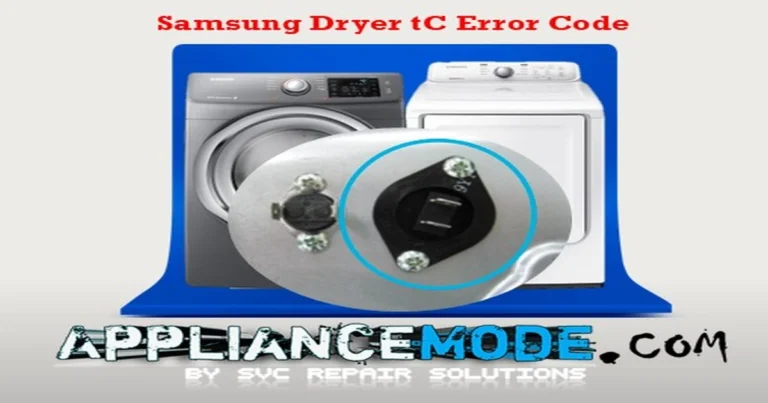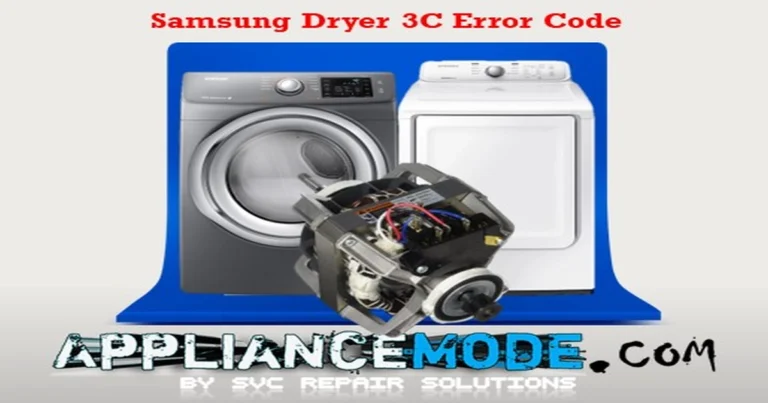Fix Your Dryer: A Guide to Frigidaire Dryer Error Codes and Troubleshooting
Experiencing issues with your Frigidaire dryer? Don’t panic! Many common problems are indicated by error codes displayed on the control panel. Understanding what these codes mean is the first step towards getting your dryer back in working order.

In this article, we’ll provide an overview of common Frigidaire dryer error codes, explain what they signify, and offer practical troubleshooting tips to help you diagnose and potentially fix the issue yourself.
By understanding these codes and following the steps outlined below, you can often avoid a service call and get your Frigidaire dryer running smoothly again.
Important Safety Notice: Always unplug your Frigidaire dryer from the power outlet before attempting any inspection, troubleshooting, or repair. Electrical components can cause serious injury or death. If you are uncomfortable performing any of these steps, or if the problem persists, it is always best to contact a qualified appliance repair technician.
Understanding Frigidaire Dryer Error Codes
Error codes are the dryer’s way of telling you something is wrong. They point to a specific system or component that isn’t functioning as expected, helping you narrow down the potential cause of the problem.
Let’s look at some common codes:
E3: Front NTC Sensor Failure
- What it means: This error code indicates a problem with the temperature sensor located near the front of the dryer drum (the “Front NTC sensor” or thermistor). NTC stands for Negative Temperature Coefficient, meaning its electrical resistance decreases as temperature increases. An E3 code often means the dryer’s control board is receiving an unexpected signal from this sensor circuit—either it’s “open” (like a broken wire, blocking the signal) or “shorted” (like wires touching improperly, sending a constant signal). Essentially, the dryer can’t accurately read the temperature in the front part of the drum.
- Possible Causes:
- A faulty front NTC sensor (thermistor).
- Damaged or loose wiring in the sensor’s harness.
- A problem with the main control board.
- Related Error Code: E5: Back NTC Sensor Failure. This code signifies a similar issue, but with the temperature sensor located at the back of the dryer drum. Troubleshooting steps are identical for both E3 and E5, just applied to the respective sensor location.
Troubleshooting Steps for E3 / E5:
- Check the Wire Harness: With the dryer unplugged, locate the wire harness connected to the NTC sensor (front or back, depending on the code). Inspect the wires for any visible cuts, pinches, or signs of damage. Ensure the connector is securely plugged into the sensor and the main control board.
- Test the NTC Sensor: This requires a multimeter. Disconnect the sensor and measure its electrical resistance (ohms). The resistance should change with temperature. At room temperature (around 25°C or 77°F), a typical NTC sensor for a Frigidaire dryer should measure approximately 50 KΩ (50,000 ohms). If the reading is significantly different, infinite (open circuit), or zero (short circuit), the sensor is likely faulty and needs replacement.
- Reference:
- Component: NTC Sensor
- Temperature: 25°C (77°F)
- Expected Resistance: ~50 KΩ
- Reference:
- Inspect the Main Control Board: If the wiring and sensor test good, the issue might lie with the main control board, which processes the sensor’s signal. Look for any visible signs of damage, burning, or loose connections on the board.
- Replace Components (If Necessary): Based on your inspection and testing, replace the faulty component (wire harness, NTC sensor, or main control board). Replacing the main board is typically the last step after ruling out the sensor and wiring.
E4: Moisture Sensor Value Out of Range Error
- What it means: Your dryer uses moisture sensors (usually two metal bars inside the drum) to detect the dampness of your clothes and determine when a cycle should end (particularly on automatic dryness cycles). An E4 code means the control board is receiving unexpected or inconsistent readings from these sensors. The sensor value is outside the range the control board expects, indicating it can’t accurately judge the moisture level.
- Possible Causes:
- Dirty moisture sensor bars (residue from fabric softeners, dryer sheets, or minerals).
- A faulty moisture sensor.
- Damaged or loose wiring to the moisture sensor.
- A problem with the main control board.
Troubleshooting Steps for E4:
- Clean the Moisture Sensors: This is the most common cause of E4. Locate the two metal strips inside the drum. Clean them thoroughly with a soft cloth dampened with rubbing alcohol or water. Avoid using abrasive materials that could scratch the sensors. Ensure they are dry before testing the dryer again.
- Test the Wire Harness: With the dryer unplugged, inspect the wiring connection to the moisture sensors (usually located near the drum opening or within the door assembly) and trace it back to the control board. Look for any damage or loose connections.
- Check the Moisture Sensor: Inspect the sensor bars themselves for any damage. While testing the sensor’s electrical properties is possible, it’s often less straightforward than testing an NTC sensor without specific technical documentation. If cleaning doesn’t help and wiring is good, the sensor unit might need replacement.
- Inspect/Replace the Main Control Board: If the sensor and wiring appear fine, the issue could be with the main control board’s ability to interpret the moisture sensor data.
C9: EEPROM Error
- What it means: The EEPROM (Electrically Erasable Programmable Read-Only Memory) is a type of memory chip on the main control board that stores critical operating information and settings for the dryer. A C9 error indicates that this memory is corrupted or inaccessible. Essentially, the dryer has lost some of its vital programming or configuration data, preventing it from functioning correctly.
- Possible Cause:
- A failure or corruption within the EEPROM chip or the main control board itself.
Troubleshooting Steps for C9:
- Attempt a Hard Reset: Unplug the dryer from the power outlet for at least 5-10 minutes. Plug it back in. Sometimes, a power cycle can clear temporary glitches in the control board.
- Inspect the Main Control Board: With the dryer unplugged, visually inspect the main control board for any obvious signs of damage, burns, or loose components.
- Replace the Main Control Board: If a hard reset doesn’t clear the C9 error, the main control board is likely faulty and will need to be replaced. The EEPROM is integrated into the board, so the entire board typically needs to be swapped out.
Conclusion
Frigidaire dryer error codes serve as helpful indicators when something isn’t right with your appliance. By taking the time to understand what codes like E3, E4, E5, and C9 mean and carefully following the corresponding troubleshooting steps outlined in this article, you can often identify and resolve the issue yourself.

I am a master Appliance Repair technician with over 35 years of experience in the field. I am passionate about helping people troubleshoot their appliances and fix common problems. My website, appliancemode.com, provides a wealth of information on troubleshooting common appliance issues and deciphering error codes. This website aims to empower people to tackle appliance repairs themselves and save money on service calls.



